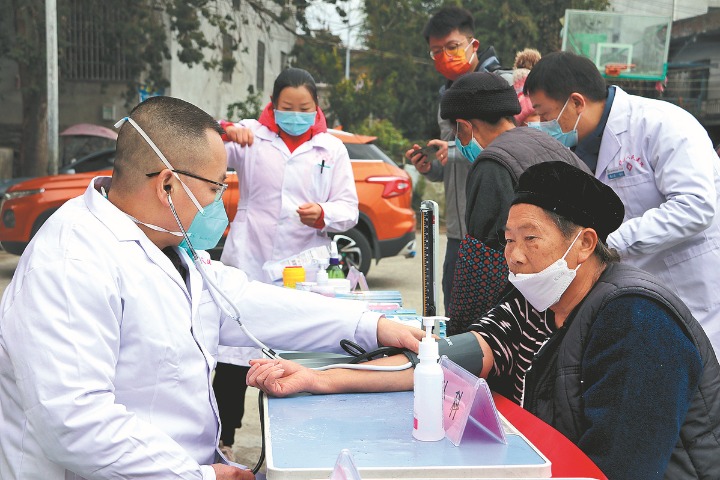How does China resume work and production in the service sector?
It is important to note that the information provided in this Series is intended for your general knowledge only and is not a substitute for professional medical advice or treatment.

In order to contain the spread of the COVID-19, China adopted social distancing measures and prohibited group gatherings, heavily affecting life service sectors such as retailing, catering, tourism, culture and entertainment. Coinciding with the Spring Festival holiday, the outbreak almost brought a halt to service consumption. Based on the estimation of the China Tourism Academy, the number of domestic tourists is anticipated to fall by 56 percent in the first quarter of 2020, and the revenue is expected to decrease by 20.6 percent. According to a report on the catering industry released by Meituan, 72.5 percent of restaurant chains suffered huge losses, and 90 percent of restaurants were facing cash flow shortages.
As progress has been made in the prevention and control of the epidemic after the Spring Festival, China adopted an orderly and differentiated approach to resume operation of the service sector. In the early stage, transportation and logistics sectors were prioritized to ensure the supply of medical materials and daily-life necessities. Retailing and trading sectors subsequently returned to business in response to demands resulted from the extended holiday and post-holiday traveler flow. In the end, the whole industry resumed work and production under the differentiated and targeted guidelines.
Here are the specific measures China has taken to promote business resumption in the service industry.
First, the Chinese government helped address cash flow shortages in the service industry. An array of fiscal and financial policies were formulated to help the tertiary industry that suffered falling revenues. Phased and targeted tax as well as social security contribution breaks are implemented for eligible enterprises. Subsidies on vocational training are provided to stabilize employment. Besides, emergency financial support was provided through preferential loans and immediate debt relief.
Second, the Chinese government helped employees return to work in an oderly manner. The service sector is labor intensive, and the returning of employees is a prerequisite for resuming business. While epidemic prevention and control measures like travel bans and quarantine of returnees reduced the transimission risk, they also posed challenges and constraints on operation resumption. As such, inappropriate control of people flows were abolished and communities were re-opened in low-risk regions. Using big data, technology companies created "Health Code" that is mutually recognized among provinces. "Point to point" transportation services were also arranged by local governments to avoid extra quarantine.
Third, the Chinese government boosted domestic consumption to cushion the blow of the epidemic. On March 13, China's National Development and Reform Commission (NDRC) and other departments jointly announced 19 measures to stimulate consumption. In addition to facilitating resumption of markets and stores, some local governments issued coupons and subsidies to increase purchasing power and consumption willingness. As of March 30, coupons worth more than 4.2 billion yuan had been distributed to residents in more than 16 provinces and municipalities.
References:
[1]https://m.21jingji.com/article/20200220/herald/3e0771b57434d19fdae322a52e4c20a1.html
[2]https://www.thepaper.cn/newsDetail_forward_5978892
[3]http://yuqing.people.com.cn/n1/2020/0401/c209043-31657881.html
Author: Liang Xiaomin, Center for International Knowledge on Development
Please feel free to contact us by sending your questions to question@chinadaily.com.cn or commenting on China Daily app. We will ask experts to answer them.














